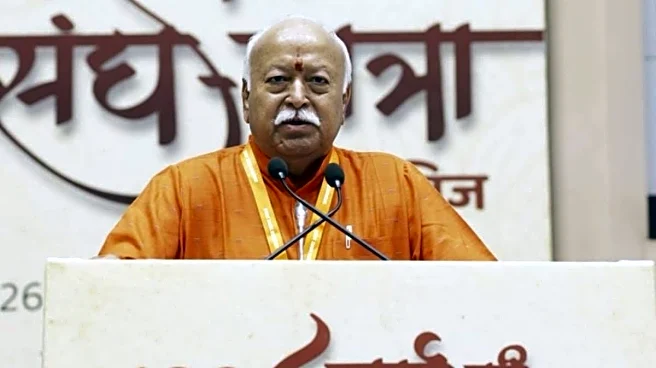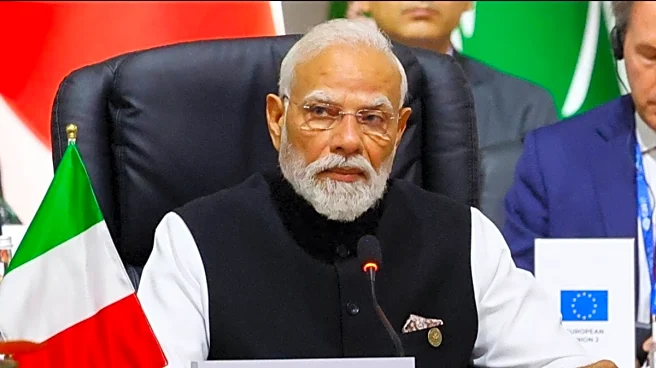Ayodhya is once again preparing for a landmark spiritual moment as Prime Minister Narendra Modi is set to hoist the saffron Dhwaja (flag) atop the Ram Janmabhoomi temple on November 25, an event many devotees are describing as a symbolic “second pran pratishtha”.
Scheduled on Vivah Panchami, the day marking the divine wedding of Lord Ram and Goddess Sita, the ceremony is being seen as more than a ritualistic observance.
For countless devotees, it marks the formal declaration of the completion of the Ram Mandir, after Ram Lalla was consecrated in the garbhagriha.
The Shri Ram Janmabhoomi Teerth Kshetra Trust recently announced that the construction work of the temple, including the main sanctum, parikrama paths and six newly built shrines dedicated
to Shiva, Ganesha, Hanuman, Surya, Bhagwati and Annapurna, has been completed. Trust general secretary Champat Rai said that the entire temple structure is ready.
The ‘second pran pratishtha’ buzz
Many in Ayodhya and across the country are calling this ceremony the “second pran pratishtha”, interpreting it as the final step after the consecrations of 2024 and 2025.
The first pran pratishtha took place on January 22 last year, followed by the installation of the Ram Darbar — featuring Ram, Sita, Lakshman and Hanuman — in June 2025. With Prime Minister Modi personally hoisting the flag atop the 161-foot spire, devotees believe this act completes the temple both in spirit and in physical form.
विवाह पंचमी की पूर्व संध्या पर श्री सीतारामजी की अद्भुत छवि से दैदीप्यमान श्री रामजन्मभूमि मंदिर के दिव्य शिखर का दर्शन
On the eve of Vivah Panchami, behold the divine spire of the Mandir, glowing with the splendid image of Shri Sita Ram Sarkar pic.twitter.com/c9rGWphUQ0
— Shri Ram Janmbhoomi Teerth Kshetra (@ShriRamTeerth) November 24, 2025
A senior priest involved in preparations said the Dhwaja Rohan represents the moment when a temple declares its spiritual presence to the world, explaining that pran pratishtha brings the deity to life while the flag announces His sovereignty.
The flag being hoisted carries deep symbolic meaning. It bears the Sun, representing Lord Ram’s Surya Vansh lineage; the sacred symbol Om; and the Kovidara tree motif associated with Ayodhya’s ancient traditions. The 42-foot flagpole installed on the shikhara has been engineered to rotate 360 degrees so the saffron flag naturally aligns with the wind. Rituals for the ceremony began on November 23, with priests performing Vedic rites and chanting mantras leading up to the main event, which will take place between 11:58 am and 1 pm under an auspicious muhurat.
#WATCH | Ayodhya, Uttar Pradesh | Regarding the Dhwajarohan ceremony tomorrow, Shri Ram Janmabhoomi Teerth Kshetra Trust Treasurer Govind Dev Giri Maharaj says, “… The moment has come when we can say that the construction of the temple of Lord Shri Ram Lalla at the birthplace… pic.twitter.com/4qQWepfZ6f
— ANI (@ANI) November 24, 2025
The security
Meanwhile, Ayodhya has been brought under an elaborate security grid ahead of the Prime Minister’s visit. Multiple layers of surveillance, drone monitoring and SPG-led protocols are in place.
Roads leading to the temple have been adorned with saffron flags, floral decorations and illuminated arches, giving the city a festive grandeur.
According to district officials, this is the largest gathering in Ayodhya since the pran pratishtha, and preparations for crowd control, VIP movement and emergency response have been meticulously done.
श्री रामजन्मभूमि मंदिर के वृहत परिसर की कुछ और झलकियां
Some more glimpses of the grand premises of the Shri Ram Janmabhoomi Mandir pic.twitter.com/18gAP793dI
— Shri Ram Janmbhoomi Teerth Kshetra (@ShriRamTeerth) November 21, 2025
Hotels and dharamshalas are nearly fully booked, while local shopkeepers report festival-like footfall and brisk business.
For many in the city, the Dhwaja Rohan ceremony is not just another ritual but the emotional culmination of a centuries-long wait. Residents believe it marks a new chapter for Ayodhya, establishing the Ram Mandir not only as a place of worship but also as a powerful cultural and civilisational symbol. As one priest described it, the flag is not merely cloth but an expression of Ram’s rajya, raised high for the world to witness.





/images/ppid_a911dc6a-image-176395443644721313.webp)






/images/ppid_a911dc6a-image-176374905828643733.webp)
/images/ppid_a911dc6a-image-17637970616167317.webp)
/images/ppid_a911dc6a-image-17637100247833941.webp)
